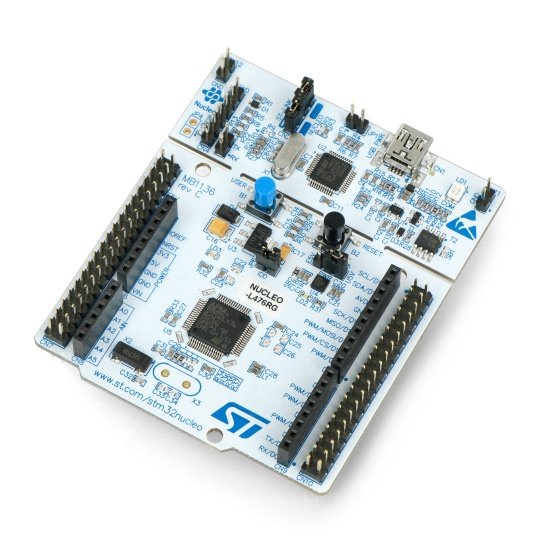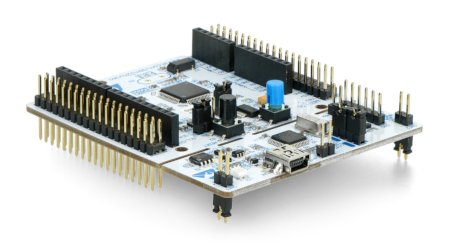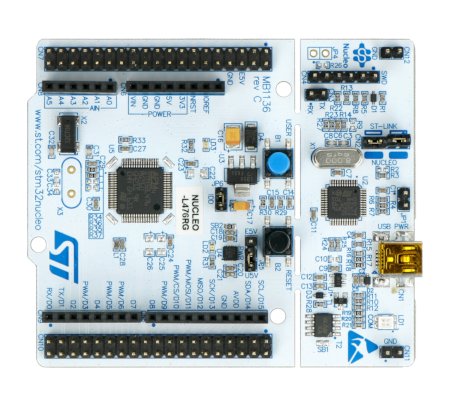Product description: STM32 NUCLEO-L476RG - with STM32L476RGT6 ARM Cortex M4 MCU
Nucleo modulewith32-bitSTM32L476RG microcontroller, which is equipped withARM Cortex M4core clocked at80 MHz,1 MB Flashmemory,128 kB SRAM. Nucleo is compatible with mbed platform and has connectors for Arduino Shield overlays. It works with most of popular development platforms including Keil, IAR and GCC compiler based environments. Device is equipped with ST-LINK debugger / programmer.
Technical specification
- Microcontroller: STM32L476RG
- Core: ARM Cortex M4 32-bit
- Clock frequency: 80 MHz
- Flash program memory: 1 MB
- SRAM: 128 kB
- DMA: 14 channels
- Interfaces: 1 x CAN, 3 x I2C, 3 x SPI, 1 x I2S, 5 x UART/USART, 1 x LPUART, 2 x SAI, 1 x SWPMI, 1 x IRTIM, 1 x USB OTG, 1 x LCD controller, 24 x capacitive touch inputs, 1 x Quad SPI
- 3 x ADC: 16 bits
- 2 x DAC: 12 bits
- 2 x Ultra Low-Power Comparators
- Two connector types:
- Connectors for Arduino Uno Rev3 compatible overlays
- Standard STMicroelectronics Morpho pins, allowing access to microcontroller pinouts
- Module compatible with mbed system(mbed.org)
- ST-Link/V2 debugger placed on the board with possibility to work as a separate device with SWD output
- Possibility to be powered via USB connector
- Built-in three LEDs:
- 1 x indicating supply voltage
- 1 x indicating communication
- 1 x user accessible
- Two buttons:
- 1 x RESET
- 1 x USER at the user's disposal
- Three different interfaces via miniUSB (USB re-enumeration):
- Virtual COM port
- Mass storage
- Port for programming/debugging
- Module supported by most of the popular environments, e.g: IAR, Keil and platforms
Useful links |
















































































































































































































































































































































